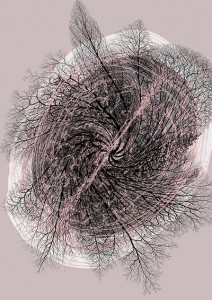Rachel Simmons, has been studying girls’ relationships, behavior and psychology for more than a decade. Her bestselling 2002 book Odd Girl Out: the Hidden Culture of Aggression in Girls started a widespread cultural conversation about girls’ psychological aggression and bullying. Her recently published new book, Curse of the Good Girl, traces the impact of our internalized ideas of “girlhood” on girls’ psychological development.
January 2011
GV Art presents a new exhibition in which seven contemporary artists consider the human brain: the physical entity described by science, the seat of the mind and soul, and origin of the creative impulse.
Their works are shown alongside a film of a Neuropathologist performing a “brain cut up.” For the viewer, this juxtaposition is the starting point for a dialogue between how we see the brain and understand its functions scientifically and what happens when this physical organ that produces our individual visual and creative understanding becomes the subject for the artist. [continue reading…]
Dr. Joshua Sparrow, a child psychiatrist with the Brazelton Touchpoints Center at Children’s Hospital in Boston, recently responded to in the New York Times questions about children and the stress of the holiday season.
Several readers wrote about their children with autism spectrum disorders and their children’s difficulties both with handling the sensory overload that comes with this time of year and with understanding the deeper meanings of the holidays. The challenges of children with autism spectrum disorders and the behaviors that result can be baffling for those who have had little experience with them. It can likewise be baffling for those who are familiar with autism, including parents and other family members, as well as the children themselves. Curious? Continue reading
Source: New York Times
Johann Hari writes an eloquent and impassioned summary of his grandmothers final years spent in care homes in Britain.
My grandmother did not believe in moaning about anything. So when I first visited her in that first home, and found her in a wheelchair staring into space, with a cold and foul pie in front of her, she said everything was fine. Although homes are supposed to lay on activities every day, I hardly ever saw any happening. There would be rows of people in metal chairs looking into the middle distance, and occasionally a surly member of staff would give them a balloon to pat to each other. Yet if you stopped and spoke to these people, they were lucid – and agonisingly bored
It gets worse:
She had been saying for months that it was far too painful, but the “carers” told her she wouldn’t get any food if she didn’t do it and it was “necessary”. “I’m not walking,” she said, crying. “It’s agony.” The staff were clucking and telling her she was “misbehaving”, as if she was a toddler.
This was so out of character that I immediately knew something was wrong, and I insisted they call a doctor. They hummed and hahed and only agreed when I got angry. She was finally taken to hospital and X-rayed. The doctors found that her legs could no longer support her weight – she was a big woman – and had suffered severe stress fractures and breakages that must have been there for months. They had been forcing her to walk on broken legs.
The shocking truth is that his grandmothers story is not unique.It terrifies me to think too much about the content of his article. What sort of society are we becoming when we treat our elderly so badly? Johann nails it when he says:
we are punishing the people who saved the world from the Nazis. Didn’t my grandmother – and yours – deserve a better ending to her story than this?
And therin lies our own fates. Food for thought. Curious? Link to read this article in The Independent
Source: The Independent

